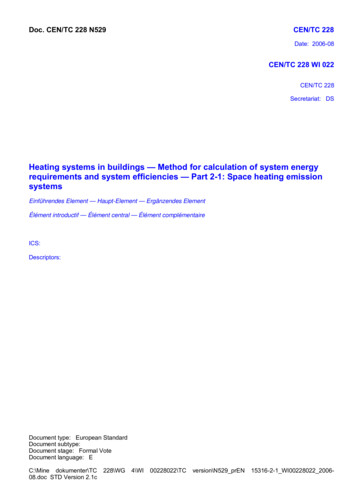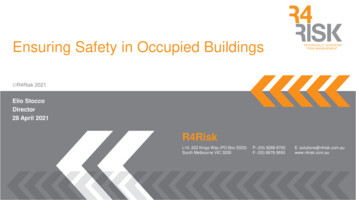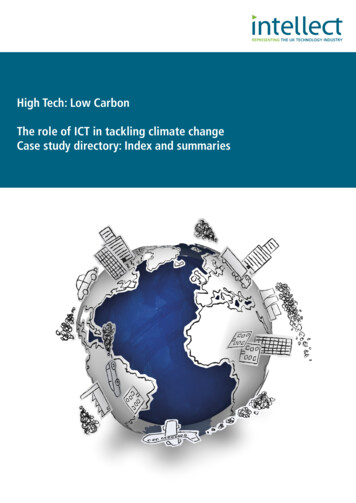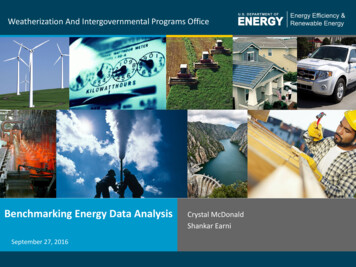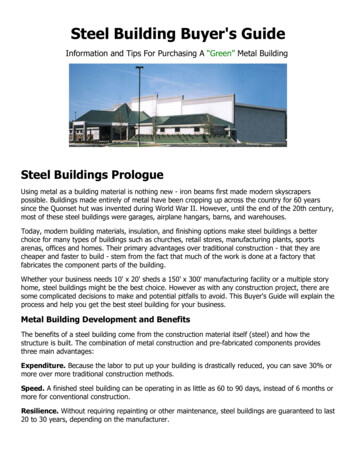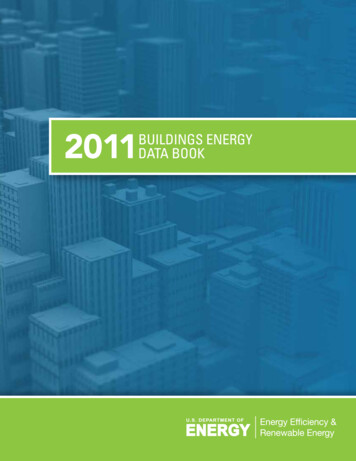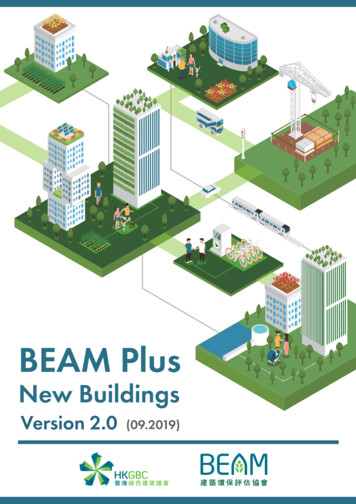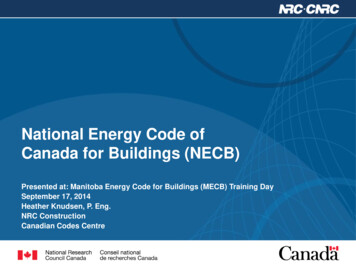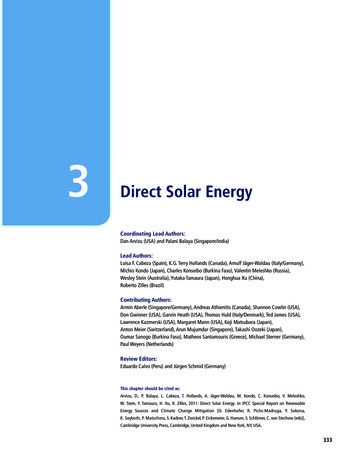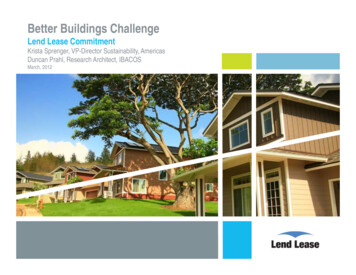
Transcription
Better Buildings ChallengeLend Lease CommitmentKrista Sprenger, VP-Director Sustainability, AmericasDuncan Prahl, Research Architect, IBACOSMarch, 2012
Goals of the Better Buildings ChallengeMake buildings 20% more efficient by 2020; save 40 billionannually for US organizations; create American jobs Overcoming market barriers/persistent obstacles with replicable, marketplacesolutions Market leaders stepping forward to share data and real solutions Demonstrating leadership Showcasing real solutions Connecting the market Partnering with industry leaders to better understand policy and technicalopportunities
More Than 50 Years’ Property ExperienceLend Lease Creating innovative property and infrastructuresolutions for more than 50 years Completed over 10,000 projects worldwide Over 17,000 employees across the globe Circa A 10.9 Billion funds under management Market capitalization of A 5.1 Billion Top 50 Company on the Australian StockExchange (ASX:LLC) Specializes across multiple asset classes Is committed to creating and building innovativeand sustainable solutions Operates Incident & Injury Free*Areas of operationhighlighted in green3
Lend Lease anagementRetailResidentialProject, Design &Construction psRefurbishment
Lend Lease Public Partnerships As part of the Military HousingPrivatization Initiative (MHPI), LendLease partners with the Department ofDefense to build and maintaincommunities on military installations 50-year partnership includes alldevelopment, maintenance,construction 40,000 homes, nearly 8,500 hotelrooms and 192 apartments 140,000 people live/work in ourcommunities Largest MHPI DeveloperAtlantic Marine Corps Communities, Tarawa Terrace Community Center5
Better Buildings Challenge Reduce energy consumption by at least a 20% within 2-5yrs 40,000 homes, 800 historic structures, 19 offices, and 19 community centers 65.3 million square feet of real estate nationwide66
Lend Lease MHPI Locations
Lend Lease Public Partnerships All new construction built to LEED Homes standardsTwo of the nation’s largest solar powered communitiesThe nation’s largest solar thermal projectLargest EnergyStar Community in NYLEED-ND Certified Community, Island Palm CommunitiesOnly Zero Energy Homes on a military installationComprehensive data set of houses and energy consumption8
ApproachBehaviorModification(Avoid)Green Retrofit(Reduce)Renewables(Produce) Home/Building Management Systems SYNERGY ‐ Resident education and trainingprogram to support sustained conservation Assessment of current state of built environment Implement customized whole building energymanagement solutions to reduce consumption Incorporate renewable energy systems such assolar, wind, etc. to reduce grid consumption9
Lend Lease Better Buildings ChallengePhase 1 Neighborhood level general evaluation– Energy durability, health, safety and comfort High level energy analysis for various levels of investment for reducing energyconsumption– Variety of options and strategies Report back to project teams on findings Strategic planning session with each project team to develop more a detailedplan by neighborhood Develop two BBC Showcase projects Support development of methodology for determining energy baseline andsavings
Lend Lease Better Buildings ChallengePhase 2 (2012) Support with detailed design and implementation plans Additional prototypes houses or pilot programs Support ongoing energy monitoring and analysis Occupant energy education Training programs as needed for Lend Lease employees, trade partners, andsuppliers Developing “knowledge repositories” and internal expertise within Lend Lease Work with NREL to conduct pre and post upgrade utility bill analysis
No matter where you go, there you are Opportunities Abound––––Thermal EnclosuresHVACDHWEnergy Management
Building America Solutions Being Considered HVAC––––High efficiency equipmentDuct repair / sealingDistributed, simplified HVACMultiple mini-splits Air sealing and Insulation– Mostly attics DHW– Tankless gas– Low flow fixtures
Technical Challenges HVAC Some HVAC systems oversized for as built conditions– Ducts will be grossly oversized for new “right sized”equipment Possible Solution: Distributed simplified minisplitsystems– Bring systems entirely within conditioned space– Zone living space and bedrooms Issues:– Going from gas heat to electric Utility costs, source energy consumption, relatively highequipment cost– Impact on occupant comfort– Comparative in place system efficiency
Technical Challenges HVAC Modeled performance vs. in place efficiency Comparison between utility bills and predicted performance showed widediscrepancy Likely in place system performance much lower than nameplate– Entire system– COP, EER and t’stat set point used to “tune” models Issues:– Reliability of savings predictionsAdjusted Model, Original Model, Utility BaselineEnergy Consumption eled BaselineUtility BaselineAdjusted Model
Technical Challenges Air Sealing andInsulation Some attics previously insulated but not air sealed Difficult access– Low slope roofs– Lots of ductwork Many walls are un-insulated, but have brick veneer exterior– Difficult and costly to insulate from outside– Lower cost low intrusion wall insulation methods
Technical Challenges Domestic Hot Water Tankless gas DHW attractive in manylocations– Water quality is an issue – scale buildup Low flow fixtures– Concerns with occupant comfort and“sabotage” Solar thermal– High cost, long returns– Evaluation of existing systems – are theystill working?
Technical Challenges Energy Management Possible solution for annual and peak load controlPilot programs have shown 7 % reduction in electric useCost to implement systemsWhat is the true level of control possible as opposed to simply relying onoccupant participation?
Areas Needing Support Built Environment– Help with how we account for district wide systems which we do not control(e.g - steam at North Haven Communities)– Assessment of New Construction Design Guidelines / Conversion Renovations– Technology recommendations Renewables– District Energy Systems (non solar)– Technology recommendations Behavior Modification– Consumption Reduction Program Peer Review/Input– Home Management Systems and other Technology recommendations19
Questions?
Better Buildings Challenge - Lend Lease Commitment Author: Duncan Prahl Subject: This presentation was given at the Building America Spring 2012 Stakehholder on March 1, 20
